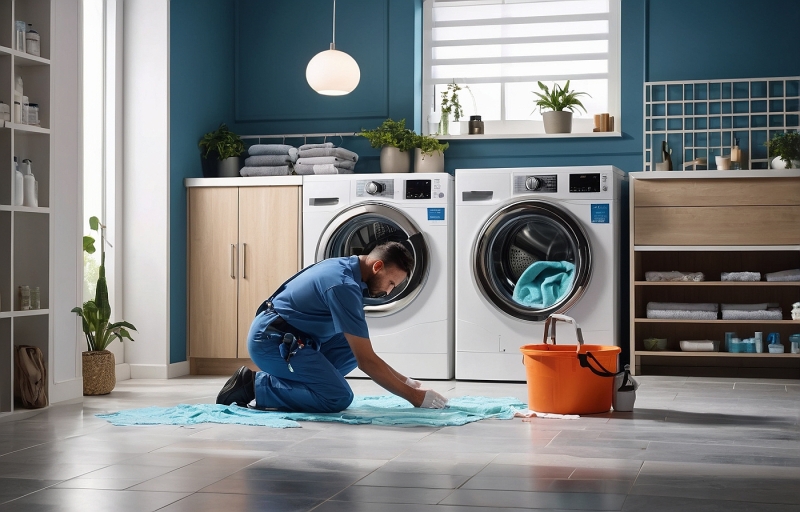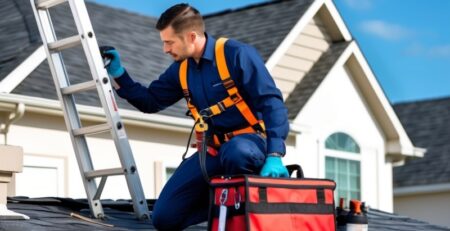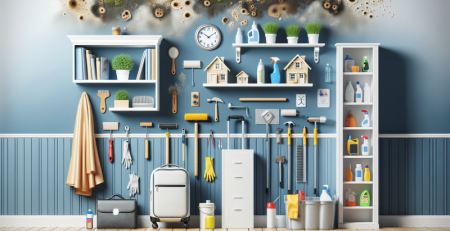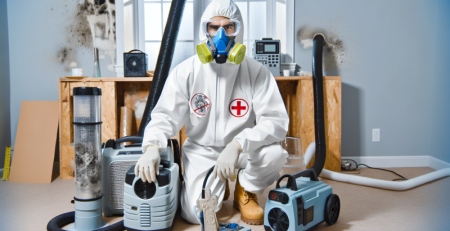Water Damage from Appliances: Prevention Tips
Appliance-related water damage is one of the most common — and costly — issues homeowners face, often striking without warning. From leaking dishwashers to malfunctioning washing machines and water heaters, these everyday appliances can cause significant damage if not properly maintained. At Kraus Restoration, NJ’s leaders in water damage restoration, we understand how quickly a small leak can turn into a major problem. That’s why we’re committed to helping homeowners in Central and Northern New Jersey prevent water damage before it starts. In this blog, we’ll share essential prevention tips to protect your home from appliance-related water damage. With our 24/7 emergency services, IICRC-certified experts, and rapid one-hour response time, Kraus Restoration is here to restore your peace of mind when disaster strikes. Whether you’re dealing with a burst pipe, sump pump failure, or stormwater intrusion, our water cleanup and damage restoration services are designed to get your property — and your life — back to normal quickly and efficiently.
Common Household Appliances That Cause Water Damage
Water damage in homes is often associated with natural disasters or plumbing failures, but many homeowners overlook the everyday appliances that can quietly cause significant destruction over time. From dishwashers to water heaters, these common household machines can leak, overflow, or malfunction, leading to costly repairs and potential health hazards like mold growth. Understanding which appliances pose the highest risk and how to maintain them properly is essential for preventing water damage and safeguarding your property.
One of the most frequent culprits of water damage is the washing machine. These appliances use a large volume of water during each cycle, and a worn-out hose or loose connection can quickly lead to flooding. According to the Insurance Institute for Business & Home Safety (IBHS), washing machine failures are among the top ten sources of residential water damage, with an average claim cost of over $5,000. To minimize risk, homeowners should inspect hoses regularly for cracks or bulges and replace them every five years, preferably with braided stainless steel hoses for added durability.
Refrigerators with ice makers and water dispensers are another hidden threat. These features require a constant water supply, typically connected via a small plastic or copper line. If this line becomes kinked, cracked, or improperly installed, it can leak slowly over time, often going unnoticed until significant damage has occurred. Placing a water alarm behind the refrigerator can help detect leaks early, and ensuring the appliance is installed correctly can prevent future issues.
Dishwashers are also a common source of water damage, especially when seals or gaskets wear out. A faulty door seal can allow water to escape during a wash cycle, pooling on the floor and seeping into cabinetry or subflooring. Regularly inspecting the door gasket for signs of wear and cleaning it to remove food particles or debris can help maintain a tight seal. Additionally, avoid overloading the dishwasher, as this can cause water to splash out and increase the risk of leaks.
Water heaters, particularly older models, are notorious for causing water damage when they fail. A ruptured tank can release dozens of gallons of water in a short time, flooding surrounding areas and damaging flooring, walls, and belongings. The National Association of Home Builders (NAHB) estimates the average lifespan of a water heater is 8 to 12 years. Homeowners should consider replacing units approaching the end of their life span and install a drain pan and leak detection system to catch leaks early.
Another often-overlooked appliance is the HVAC system, especially those with built-in condensate drains. These systems remove moisture from the air, which collects in a drain pan and exits through a drain line. If the line becomes clogged with algae or debris, water can back up and overflow, leading to water damage in ceilings, walls, or floors. Routine maintenance, including cleaning the drain line and inspecting the pan, can help prevent such issues.
Clogged or malfunctioning toilets and sinks are also frequent contributors to water damage. While not appliances in the traditional sense, they are essential fixtures that can cause significant problems if not maintained. A blocked drain or faulty shut-off valve can result in overflows, especially in bathrooms located on upper floors, where water can seep through ceilings and walls to lower levels.
“Appliance-related water damage accounts for nearly 30 percent of all residential water damage claims,” according to the Insurance Information Institute (III).
To help homeowners identify and monitor these risks, here is a list of common household appliances and fixtures that can cause water damage:
- Washing Machines – Leaking hoses or overflows due to clogs or mechanical failure.
- Refrigerators – Water supply line leaks from ice makers or dispensers.
- Dishwashers – Faulty door seals or clogged drains leading to leaks.
- Water Heaters – Tank ruptures or valve failures causing flooding.
- HVAC Systems – Clogged condensate drain lines leading to overflow.
- Toilets – Overflows from clogs or faulty float mechanisms.
- Sinks – Leaks from worn-out seals or corroded pipes.
Preventing water damage from these appliances involves regular maintenance, timely replacement of aging components, and the installation of leak detection systems. Smart water sensors and automatic shut-off valves can provide an extra layer of protection by alerting homeowners to leaks and stopping water flow before significant damage occurs.
For those who have already experienced water damage, professional restoration services are essential to mitigate further harm and restore the home to its original condition. At Kraus Restoration, we specialize in comprehensive water cleanup solutions, ensuring that affected areas are thoroughly dried, sanitized, and repaired. Our team also offers expert mold cleanup services to address any secondary issues that may arise from prolonged moisture exposure.
Understanding the risks associated with everyday appliances and taking proactive steps to maintain them can significantly reduce the likelihood of water damage. For more information about our restoration services and how we can help protect your home, visit our about page or reach out through our contact form.
For further reading on appliance maintenance and water damage prevention, consider these external resources:
- Insurance Information Institute – Preventing Water Damage
- IBHS – Residential Water Damage Research
- EPA – Fix a Leak Week
By staying informed and vigilant, homeowners can avoid the stress and expense of water damage caused by common household appliances.
Practical Steps to Prevent Appliance-Related Leaks
Preventing appliance-related water damage begins with consistent maintenance and proactive measures. Start by routinely inspecting all major appliances that use water, such as washing machines, dishwashers, refrigerators with ice makers, and water heaters. Check hoses and connections for signs of wear, cracks, or corrosion, and replace them every five years or sooner if damage is evident. Using high-quality, stainless steel braided hoses instead of rubber ones can significantly reduce the risk of leaks. Ensure that appliances are installed correctly and level to prevent unnecessary strain on connections. It’s also wise to install a water leak detection system or smart water sensors near appliances, which can alert you to leaks before they cause significant damage. Regularly cleaning filters and drains in appliances like dishwashers and washing machines helps maintain proper water flow and prevents clogs that can lead to overflow. For added protection, consider installing an automatic shut-off valve that cuts off the water supply when a leak is detected. If you’re unsure about the condition of your appliances or need help with preventive maintenance, professional services can offer peace of mind. Learn more about our expert services designed to protect your home from water damage. Additionally, reviewing past residential projects can provide insight into how proactive measures have helped other homeowners avoid costly repairs. Taking these practical steps not only safeguards your property but also extends the lifespan of your appliances, ensuring a safer and more efficient home environment.
In conclusion, while household appliances make our lives more convenient, they can also pose a significant risk of water damage if not properly maintained. By taking proactive steps—such as regularly inspecting hoses and connections, replacing worn-out parts, and installing water leak detectors—you can greatly reduce the chances of costly and disruptive water damage. Remember, prevention is always more effective and less expensive than repair. Stay vigilant, schedule routine maintenance, and act quickly at the first sign of trouble to keep your home safe and dry.








